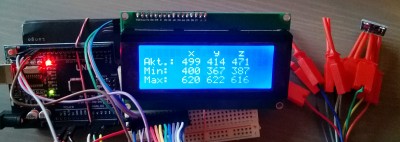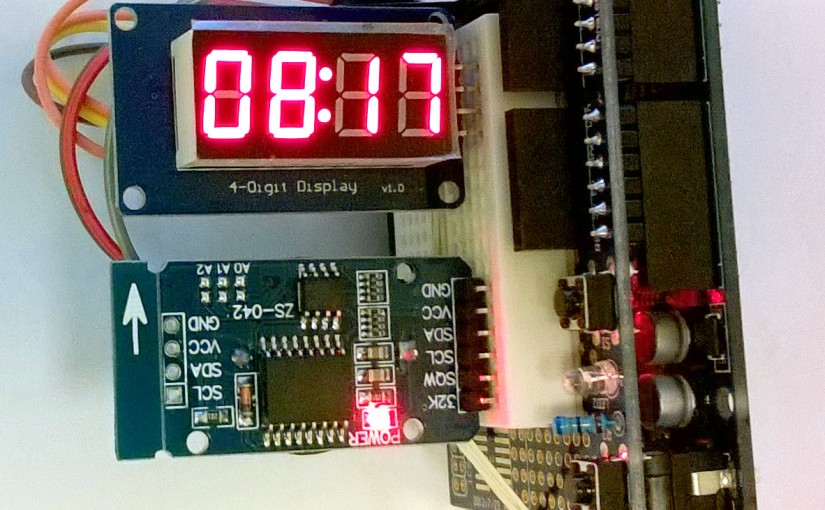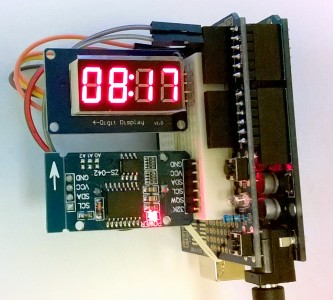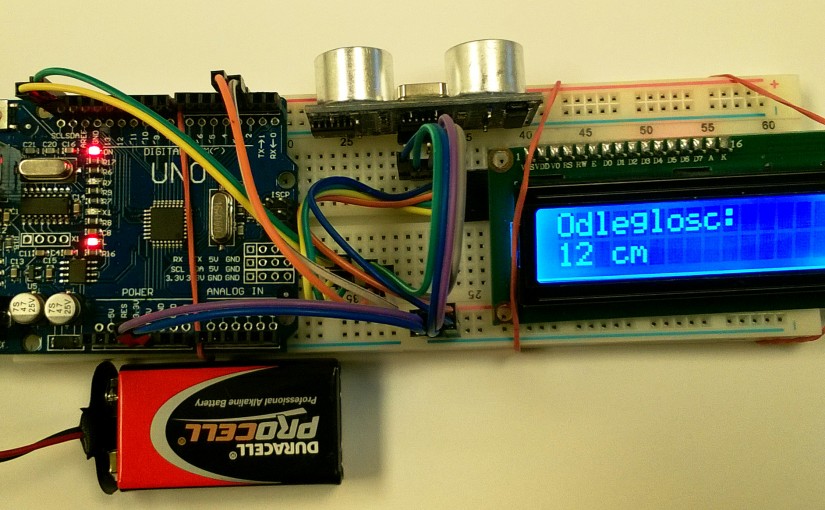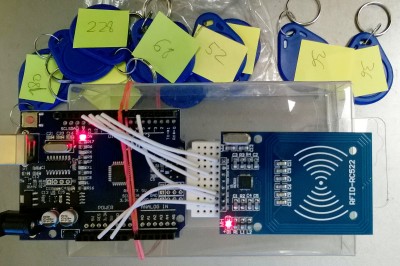First tests of accelerometer ADXL335 using I2C controlled 20×4 LCD
For the tests I used already installed for 16×2 display module LiquidCrystal_I2C library (see distance meter and other posts)
The accelerometer IC itself is described on Analog Devices and has pretty simple interface when mounted on GY-61 board. There are just 3 connectors for each direction acceleration analog signals and power. It seems that one can power GY-61 module with 5V but I sticked to 3v3 and also used it as the reference voltage for analog input. Continue reading ADXL335 I2C 2004 LCD

